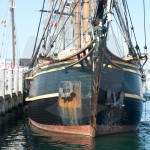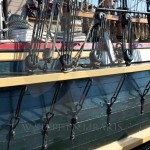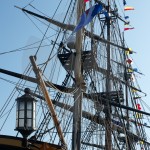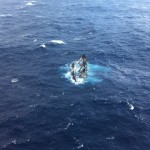Rob comes from a legacy of prudent seamanship; the “Carina” family. I liken the sentiments to the idea that there was an assumption that when we left the dock, we were on our own.
His remarks have prompted responses on scuttlebutt, where his initial posting appeared.
BOATING ACCIDENTS – A SIGN OF THE TIMES
By Rob Nye, nearly 50 years old
I believe that to understand the recent tragedies in California, we need to
look at the entire sport of sailing and how the competitive side is managed
and promoted.
As harsh as it may sound, both events are the result of a lack of good
seamanship. Webster’s defines Seamanship as: the art or skill of handling,
working, and navigating a ship. In modern times it appears that it is
possible to be a professional sailor and not be a good seaman; it used to be
that seamanship was a requirement to get invited in the first place. Now
it’s what do you weigh, or how hard you can you hike. To navigate, it is to
have superior computer skills.
Following these accidents, Gary Jobson, president of the U.S. Sailing, has
said “we need to take a step back and take a deep breath with what we’re
doing. Something is going wrong here.”
On one hand, I take offense at Gary’s use of “we” as if all sailors bear
some responsibility for a boat being caught inside the breaking surf or
another apparently running into an island while motoring at night. Yet on
the other, speaking as President of the governing body of our sport, perhaps
US Sailing does share some blame for the lack of basic seamanship exhibited
today. I hope the “what we’re doing” he refers to isn’t simply holding
races; as if the event itself is to blame. It isn’t.
When I was growing up, the summer calendar was full of short, medium and
long distance races that included sailing to fixed marks. Even day races
used fixed marks, and once in a while, we’d put the kite up to get to the
windward mark after drifting off the starting line. Once in a while, we even
anchored. Navigation was more than “putting the pin in the box” and entering
a range and bearing to the windward mark. On any given leg we might drift,
beat to windward, reach, change sails and if we were lucky, even broach or
at least enjoy a good knockdown.
It was during this era we learned to use harnesses, sail in the fog, keep an
eye on each other and stay sharp when drifting around at 3am on Long Island
Sound. Day races were sometimes another opportunity to practice seamanship
as the decision to race was left with the skipper, not some government
agency.
I remember leaving the dock for a fall series race with two reefs, the #4
jib and harnesses on for a “casual” race. Now race committees postpone if
the line isn’t perfectly square, or the inflatable mark isn’t directly to
windward, or they cancel the race if it’s blowing over 25 at the dock or
worse, forecast to blow later in the day. Why get a crew that’s seen heavy
weather when we don’t sail when it blows, and if we do all we’re going to do
is sausages? — Read on:
http://forum.sailingscuttlebutt.com/cgi-bin/gforum.cgi?post=13715




